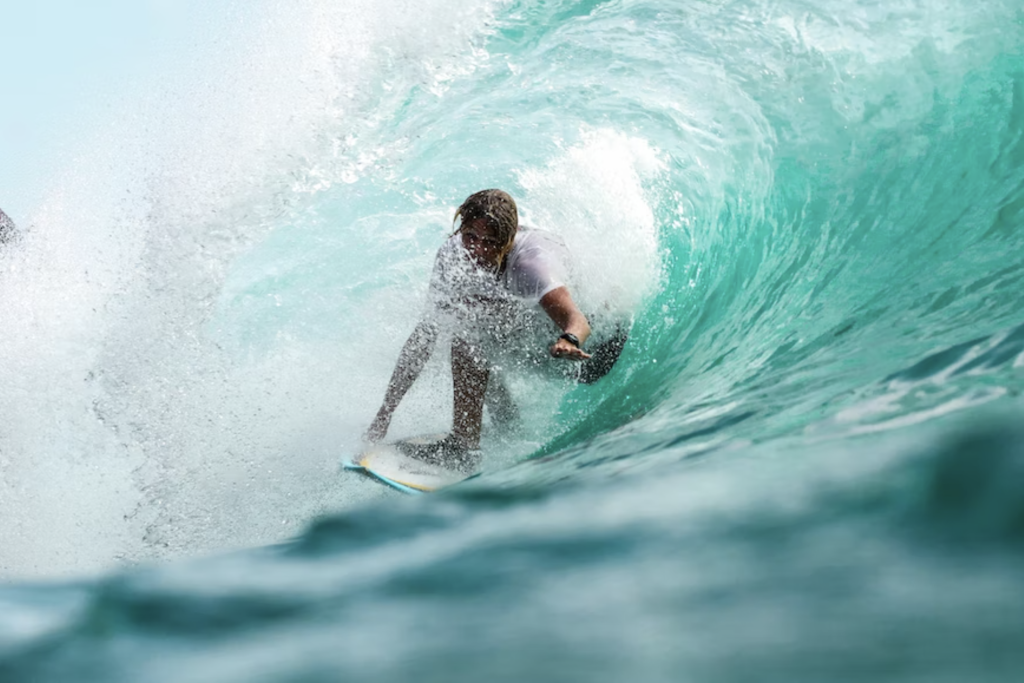How to start Surfing: Guide for beginners
Most professional surfers are against beginners in their sport. This behavior is quite understandable. A beginner still needs to learn how to control the board properly. Standing on the waves on an uncontrollable board is a danger to himself and everyone around him. Another reason is the limited amount of big waves you can catch.
Some tips will help beginners learn the surf basics. We will talk about this in today’s article. We’ll show you how to start surfing, choose a place to practice, get the right gear, and get on your board for the first time.
Basic Rules for Beginner Surfers
Many get up on the board during student life. During this period, life is seething, and you want thrills. And when you live near the ocean, why not ride 1-2 waves in your spare time?? But, student life is highly eventful. Sometimes there is so much study that there is not enough free time for other activities. There is one solution here – use essay writing services legit. You transfer the writing of your scientific work to a professional author and pick up the finished essay after a while. Professional college writing services will help you learn. As a result, you will free up enough time to master the basics of surfing while not worsening your academic performance.
Let’s move on to tips for beginner surfers:
- Choose places that are suitable for beginners. This will be safer for you and those around you.
- Please see what’s happening on the water before you set sail. During this time, you will learn the places where the waves break most often and the level of training of other surfers.
- Be polite and respectful. You may be surprised to find that most professional surfers are very quiet. Try not to break this silence by shouting or doing anything else that might disturb those around you.
- You can learn the rules of surfing. The main one is one wave per person. Always keep a safe distance. Another limitation is that on the water, the main one is the one that is closer to the place where the wave breaks.
Surfing Basics: Where to Get Started
Finding a good surf spot is often difficult for beginners. Finding a place where the waves slowly break on the sandy bottom would be best. The depth at this point should be, on average, from your waist to your chest. Don’t be afraid to go where the kids are learning. Avoid rocky terrain and overly rough waves. A beginner cannot cope with such things; eventually, everything can end sorrowfully.
Another tip is to choose areas with not too many people but enough waves. In such places, you can ideally develop your skills. Remember that constant learning is the key to your success. You start in shallow water and take waves up to your knees. But a little time will pass, and any wave will become subject to you.
For beginner surfers, attending a surf school is a suitable option. Such training is often held in safe places; they will also tell you the rules and teach you how to stand on the board. Are you still in college, you have many assignments, and you are afraid that you will not be able to combine your studies there and at a surfer school? Don’t worry. College writing services are popular among novice surfers. It’s a real lifeline that helps you stay on track with life’s tasks. Only the best research paper writers will take care of your tasks if you need more time to do your papers in college. Essay writing service legit, so you can safely use their services.
Your success largely depends on choosing the right place for surfing for beginners. On the Internet, you can find special forums for surfers, where they share information about areas where it is better to ride. You can highlight something for yourself. Feel free to travel, and avoid getting hung up on one place for surfing.
Preparing the Right Equipment
The most important thing in surfing is the board. But you may also need other equipment:
- Bathing suit. It will help you not rub your back and stomach while on the board and protect you from hypothermia in the cold season.
- Leash. The length of the leash should match the size of your surf.
- Wax. It will prevent slipping off the board while riding. Before the swim, wax the area where your legs will be.
How to Surf for Beginners
Here are a few tips from the Hanalei Surf School teacher on how to catch the first wave:
- Master the process at home or on the beach. You have to be able to jump to your feet on the surf in one spurt.
- Choose the right wave, turn the board’s bow towards the shore, lie down and start paddling. The nose of the board should lightly touch the water. Continue paddling while keeping the board level so that it is perpendicular to the wave.
- Stop paddling and get on your board when you feel a wave coming.
- Please keep your knees slightly bent. You need to look only ahead. It is also essential to feel confident on the board.
Conclusion
When learning to surf, always remember your safety. In the event of a fall, it is essential to sink into the water, like a leaf on a wave. Otherwise, you may dive too deep and collide with something underwater. Our surfing guide will help you catch the first wave, and you will soon become a professional surfer.
Sven Eggers. He enjoys surfing and writing student essays and knows how vital the right wave is for a surfer. Also, he helps students free up time for more active training.

